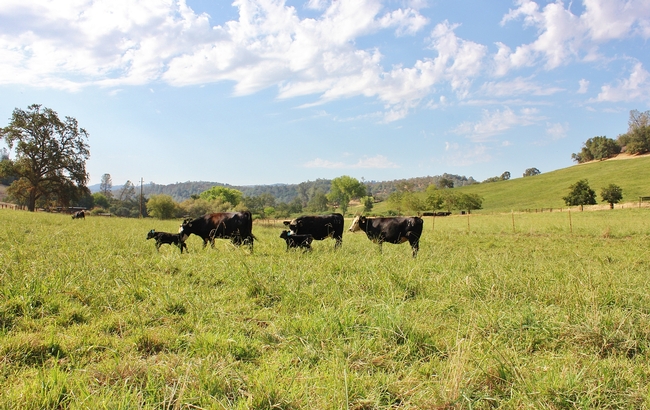Small black dots can be seen from afar amidst the Lower Ranch fields at the Sierra Foothill Research & Extension Center. Upon closer inspection, those spots morph into fuzzy, knob-kneed, curious little calves that are sure to insight many cries of “Awwwwe!” from visitors.
However, to a seasoned rancher those cute calves are a testament to the worthwhile blood, sweat, and tears that were shed leading up to a successful delivery. A healthy calf is the ultimate goal of any cow-calf manager, but once those critters finally do take their first breaths, the work has just begun…again.
In the Sierra Foothills, healthy calves signify a greater achievement - the triumph over a bacterial disease called epizootic bovine abortion (EBA). Extensive research has been conducted on this economically devastating problem, with annual losses in the range of 45,000 to 90,000 calves in the state of California alone.
EBA is commonly termed “foothill abortion” due to the regional outbreaks affecting only foothill, semi-arid and mountainous ranges of California, parts of Nevada, and southern Oregon. Through studies and research efforts by scientists associated with UC Davis, known information and management strategies have made slow, yet very significant progress since the recognition of EBA in the 1960's. For example, the culprit of EBA has been identified as the soft-shelled tick Ornithodoros coriaceus – explaining the climatic limitations of the disease so far.

Faculty and site conditions at SFREC have provided the ideal atmosphere for useful data collection. Staff Research Associate Nikolai Schweitzer is charged with the task of checking the irrigated fields daily for signs of aborted fetuses.
“It's important to be highly aware and check the fields at least twice a day. The scavengers in this area move in quickly!” said Schweitzer.
All aborted fetuses are transported to UC Davis for additional lab tests to accurately determine if EBA was the cause of death. Infected cows do not show signs of the disease during pregnancy because the bacteria is transmitted to the immature fetus where it proliferates and results in a late-term abortion.
Fortunately, the outlook for the candidate vaccine is very promising. The release of an effective EBA vaccine in the future will save ranchers countless hours of disappointment and headaches, while beefing up their worn wallets! This will be another significant feat for the cattle industry, SFREC, UCANR, and animal scientists in the West.
